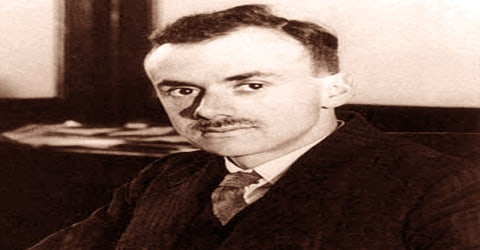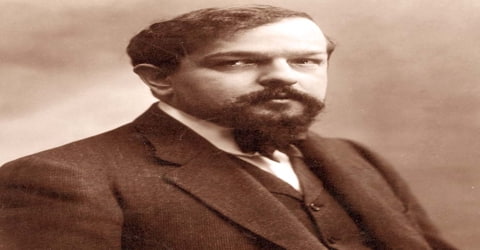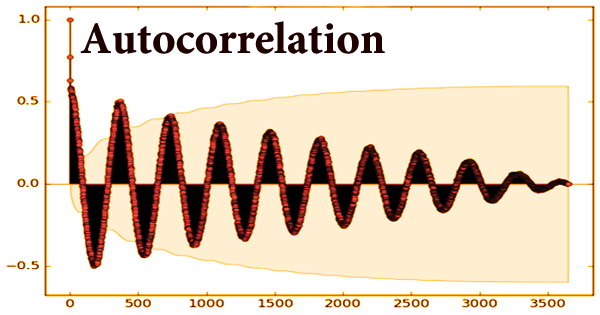Biography of Paul Dirac
Paul Dirac – English theoretical physicist.
Name: Paul Adrien Maurice Dirac
Date of Birth: 8 August 1902
Place of Birth: Bristol, England
Date of Death: 20 October 1984 (aged 82)
Place of Death: Tallahassee, Florida, US
Father: Charles Dirac
Mother: Florence Hannah Dirac
Spouse/Ex-: Margit Wigner (m. 1937–1984)
Children: Gabriel Andrew Dirac, Mary Elizabeth Dirac, Monica Florence Dirac, Judith Dirac
Fields: Theoretical physics
Early Life

Paul Adrien Maurice Dirac was an English theoretical physicist who is regarded as one of the most significant physicists of the 20th century. He was born in the city of Bristol, England, UK on August 8, 1902. He had an unhappy childhood, and in spite of possessing the ability to speak French, German and Russian, he was known for his long silences. He was particularly interested in mathematics and after hearing of Einstein, he got into advanced physics and visited Niels Bohr for research work.
From childhood Dirac showed his genius in mathematics and in school. He entered the University of Bristol in 1918 at the age of 16 and graduated with a degree in electrical engineering in 1921. He then earned an additional degree in mathematics two years later. After his time at the University of Bristol, Dirac attended Cambridge University and in 1926 graduated with his PhD in physics.
He worked through the rise of the Nazi party in Europe, the repressions of Stalinist Russia, the World War II, the McCarthy era and the Cold War. A brilliant physicist who made invaluable contributions to science, he was an unusual man on the personal front. He was known for his taciturn nature and was outspoken in his criticism of others.
Dirac made fundamental contributions to the early development of both quantum mechanics and quantum electrodynamics. Among other discoveries, he formulated the Dirac equation which describes the behaviour of fermions and predicted the existence of antimatter. Dirac shared the 1933 Nobel Prize in Physics with Erwin Schrödinger “for the discovery of new productive forms of atomic theory”. He also made significant contributions to the reconciliation of general relativity with quantum mechanics.
The Dirac Equation explained the behavior of electrons and foretold the existence of antimatter. Dirac was also able to infer the existence of vacuum polarization, revealing that what we once believed was empty space is actually awash with short-lived particle-antiparticle pairs.
Dirac was regarded by his friends and colleagues as unusual in character. In a 1926 letter to Paul Ehrenfest, Albert Einstein wrote of Dirac, “This balancing on the dizzying path between genius and madness is awful”.
He was the Lucasian Professor of Mathematics at the University of Cambridge, a member of the Center for Theoretical Studies, University of Miami, and spent the last decade of his life at Florida State University.
Dirac founded quantum electrodynamics, accounting for the creation and annihilation of photons of light within atoms, and his Lagrangian formulation of quantum mechanics led to Richard Feynman’s path integrals.
Dirac showed that quantization of electric charge occurs naturally if a magnetic monopole exists somewhere in the universe. He also created a prototype string theory.
Childhood, Family and Educational Life

(Paul Adrien Maurice in 1907)
Paul Adrien Maurice Dirac was born on August 8, 1902 in Bristol, England and grew up in the Bishopston area of the city. His father, Charles Adrien Ladislas Dirac, was an immigrant from Saint-Maurice, Switzerland, who worked in Bristol as a French teacher. His mother, Florence Hannah Dirac, née Holten, the daughter of a ship’s captain, was born in Cornwall, England, and worked as a librarian at the Bristol Central Library. Paul had a younger sister, Béatrice Isabelle Marguerite, known as Betty, and an older brother, Reginald Charles Félix, known as Felix, who committed suicide in March 1925. Dirac later recalled: “My parents were terribly distressed. I didn’t know they cared so much… I never knew that parents were supposed to care for their children, but from then on I knew.”
Dirac’s father forced him to speak only French, while his mother required only English. Additionally, Dirac’s father was a strict disciplinarian who applied a rigid set of rules and punishments for any misdeeds. His childhood may be one of the reasons Dirac was an introvert, a trait he carried for the rest of his life.
Dirac had a strained relationship with his father, so much so that after his father’s death, Dirac wrote, “I feel much freer now, and I am my own man.” Charles forced his children to speak to him only in French, in order that they learn the language. When Dirac found that he could not express what he wanted to say in French, he chose to remain silent.
Dirac was educated first at Bishop Road Primary School and then at the all-boys Merchant Venturers’ Technical College (later Cotham School), where his father was a French teacher. After completing his school education in 1918 he studied electrical engineering at the University of Bristol on a scholarship and completed his degree in 1921. Even his first-class honours degree could not get him a job in those post World War I recession times.
He cleared the entrance examination for St John’s College, Cambridge University and received a £70 scholarship. But as the overall costs of living and studying in Cambridge exceeded his budget, he gave up this opportunity.
The University of Bristol offered him a B.A. in Mathematics with no tuition fees, which he accepted. After graduating in 1923 with first class honours, he received a £140 scholarship from the Department of Scientific and Industrial Research.
Now equipped with enough finance, he went to Cambridge. For the next three years he worked under the supervision of Ralph Fowler and received a PhD in 1926. He continued his research in Copenhagen with Niels Bohr and became a fellow of St. John’s College in 1927.
Personal Life

Dirac married Margit Wigner in 1937. He adopted Margit’s two children, Judith and Gabriel, from an earlier marriage. Together, they had two more daughters, Mary and Florence. Margit proved to be an excellent housewife and let Dirac attend to his research work as per his needs.
Margit, known as Manci, visited her brother in 1934 in Princeton, New Jersey, from her native Hungary and, while at dinner at the Annex Restaurant met the “lonely-looking man at the next table.” This account from a Korean physicist, Y. S. Kim, who met and was influenced by Dirac, also says: “It is quite fortunate for the physics community that Manci took good care of our respected Paul A. M. Dirac. Dirac published eleven papers during the period 1939–46…. Dirac was able to maintain his normal research productivity only because Manci was in charge of everything else.”
In the early part of his life Dirac was very nearly a workaholic. He worked extremely hard for almost all of his waking hours six days a week. On Sundays, he went for long walks. But Sunday was not a religious day of rest for Dirac. Indeed, he was something of a militant atheist, prompting quantum physicist Wolfgang Pauli to remark, to Dirac’s amusement:
“Well, our friend Dirac has got a religion and its guiding principle is: There is no God and Paul Dirac is His prophet.”
Dirac enjoyed walking, climbing, and reading – particularly murder mysteries by Agatha Christie, children’s comics, and Sherlock Holmes stories – The Hound of the Baskervilles was published in the same year as Dirac was born. Dirac was an excellent chess player, and could play several other enthusiasts simultaneously.
Career and Works
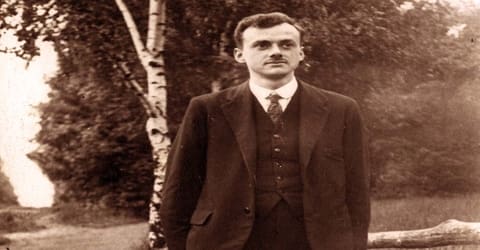
In 1923, aged 21, Dirac left his parents’ home for graduate school at Cambridge, where he researched general relativity and quantum mechanics.
His doctoral advisor, Ralph Fowler, a mathematical physicist, introduced Dirac to the new atomic model of Niels Bohr. In Bohr’s model, electrons were restricted to defined circular orbits around the nucleus. An electron could not have just any amount of energy. It could only have the specific energy defined by the orbit it occupied.
If an electron dropped from a high energy orbit to a lower one, it released energy as light. Similarly when incoming light caused an electron to jump to a higher energy orbit, that light was absorbed by the atom.
Dirac was famously not bothered by issues of interpretation in quantum theory. In fact, in a paper published in a book in his honour, he wrote:
“The interpretation of quantum mechanics has been dealt with by many authors, and I do not want to discuss it here. I want to deal with more fundamental things.”
In 1928, he postulated a relativistic equation of motion for the wave function of the electron which established a connection between relativity and quantum mechanics. This became his famous ‘Dirac Equation’.
The formulation of the equation led to another scientific revelation—the prediction of existence of positron (anti-particle to electron), in a theoretical model of the vacuum known as the ‘Dirac Sea’.
His book ‘Principles of Quantum Mechanics’ published in 1930 consolidated the works on matrix mechanics and wave mechanics into a single mathematical formalism. The book introduced the delta function and in the third edition (1939), he included the bra-ket notation which enabled it to be used universally.

Dirac, however, knew more mathematical methods than Heisenberg: he was an expert on the quaternions of William Rowan Hamilton, familiar with Grassmann algebra, and talented in projective geometry – all of which feature non-commuting quantities.
About a month after reading Heisenberg’s paper, Dirac was pondering the AB ≠ BA question in quantum mechanics. He asked himself about the quantity AB minus BA. He recalled something called a Poisson bracket. This was his key to unlocking a deeper meaning from Heisenberg’s work. By early November, working almost around the clock, Dirac had written a paper which he entitled “The Fundamental Equations of Quantum Mechanics”.
Dirac’s The Principles of Quantum Mechanics, published in 1930, is a landmark in the history of science. It quickly became one of the standard textbooks on the subject and is still used today. In that book, Dirac incorporated the previous work of Werner Heisenberg on matrix mechanics and of Erwin Schrödinger on wave mechanics into a single mathematical formalism that associates measurable quantities to operators acting on the Hilbert space of vectors that describe the state of a physical system. The book also introduced the delta function.
In the 1950s, he found a way of putting the Tomonaga-Schwinger equation into the Schrodinger representation, while also giving explicit expressions for the scalar meson field, the vector meson field and the electromagnetic field.
He derived the anomalous magnetic moment “Schwinger term” and the Lamb shift using the Heisenberg picture, in 1963. His 1964 publication ‘Lectures on Quantum Mechanics’ dealt with the constrained dynamics of nonlinear dynamical systems and he published a paper titled ‘Quantization of the Gravitational Field’ to the 1967 ICTP/IAEA Trieste Symposium.
Dirac was the Lucasian Professor of Mathematics at Cambridge from 1932 to 1969. In 1937, he proposed a speculative cosmological model based on the so-called large numbers hypothesis. During World War II, he conducted important theoretical and experimental research on uranium enrichment by gas centrifuge.
Dirac’s quantum electrodynamics (QED) made predictions that were – more often than not – infinite and therefore unacceptable. A workaround known as renormalisation was developed, but Dirac never accepted this. “I must say that I am very dissatisfied with the situation”, he said in 1975, “because this so-called ‘good theory’ does involve neglecting infinities which appear in its equations, neglecting them in an arbitrary way. This is just not sensible mathematics. Sensible mathematics involves neglecting a quantity when it is small – not neglecting it just because it is infinitely great and you do not want it!” His refusal to accept renormalisation resulted in his work on the subject moving increasingly out of the mainstream.
In 1969, aged 67, he retired from his Lucasian Chair at Cambridge and moved to Florida, USA, where he carried out research at the University of Miami and Florida State University. He vacationed in Cambridge most years to avoid the worst of Florida’s summertime heat.
In 1975, he gave a series of five lectures at the University of New South Wales, which were later published as a book titled ‘Directions in Physics’ in 1978. The royalties from the book were donated to the university, for the establishment of the Dirac Lecture Series.
Awards and Honor
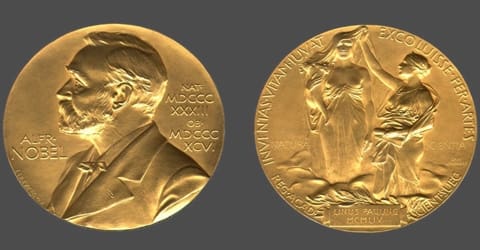
Dirac and Erwin Schrodinger shared the 1933 Nobel Prize for Physics, a recognition “for the discovery of new productive forms of atomic theory’.
Dirac was also awarded the Royal Medal in 1939 and both the Copley Medal and the Max Planck Medal in 1952. He was elected a Fellow of the Royal Society in 1930, an Honorary Fellow of the American Physical Society in 1948, and an Honorary Fellow of the Institute of Physics, London in 1971.
The University of New South Wales awards the ‘Silver Dirac Medal’, the Florida State University awards the ‘Dirac-Hellman Award’ and the Institute of Physics awards the ‘Paul Dirac Medal’ in Dirac’s honour.
Death and Legacy

Paul Dirac died aged 82 in Tallahassee, Florida, on October 20, 1984. He was buried at Tallahassee’s Roselawn Cemetery. His wife Margit was buried alongside him after her death in 2002.
Dirac’s childhood home in Bristol is commemorated with a blue plaque and the nearby Dirac Road is named in recognition of his links with the city. A commemorative stone was erected in a garden in Saint-Maurice, Switzerland, the town of origin of his father’s family, on 1 August 1991. On 13 November 1995 a commemorative marker, made from Burlington green slate and inscribed with the Dirac equation, was unveiled in Westminster Abbey. The Dean of Westminster, Edward Carpenter, had initially refused permission for the memorial, thinking Dirac to be anti-Christian, but was eventually (over a five-year period) persuaded to relent.
The Paul A.M. Dirac Science Library at Florida State University, which Manci opened in December 1989, is named in his honour, and his papers are held there. Outside is a statue of him by Gabriella Bollobás. The street on which the National High Magnetic Field Laboratory in Innovation Park of Tallahassee, Florida, is located is named Paul Dirac Drive. As well as in his home town of Bristol, there is also a road named after him in Didcot Oxfordshire, Dirac Place. The BBC named a video codec, Dirac, in his honour. An asteroid discovered in 1983 was named after Dirac. The Distributed Research utilising Advanced Computing (DiRAC) and Dirac software are named in his honour.
Information Source:
